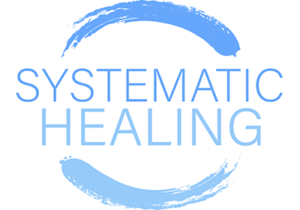In this article, I’m going to give a rational explanation for how, why, and under which circumstances the standard conventional medical model breaks down and offer an alternative solution.
When we go see a conventional doctor, we generally assume that the ordered testing will reflect the truth of our condition leading to a treatment plan that will solve our problem. This model often works and shines particularly in the settings of Emergency Medicine, Critical Care Medicine, and Trauma Surgery. However, in the setting of chronic syndromes, this model often breaks down and here are some of the main reasons why:
– Testing is not sensitive enough: No test is 100% accurate in detecting the presence of its target. For example, the current false negative rates for the rapid COVID antigen test are around 50%. Another example is that the standard blood testing for Lyme disease can be falsely-negative up to 60% of the time.
– Blood testing doesn’t accurately reflect individual organ status: a blood test reflects the levels of its targets in the bloodstream but not in the tissues. For example, patients with chronic fatigue syndrome can show normal vitamin B12 levels in their bloodstream, and yet spinal tap reveals low levels in the cerebrospinal fluid. The same principle plays out with heavy metals in the bloodstream. These levels reflect recent exposure but don’t reflect how much heavy metal is stored in the brain, bones, and other organs. There is no test, to date, that will accurately measure this.
– Treatment and diagnostic protocols are not up to date with medical literature: Conventional medicine tends to be a conservative field and slow to change. Current diagnostic and treatment guidelines can be decades behind the latest scientific evidence. For example, consider chronic low back pain. Medical literature suggesting antibiotic therapy can improve pain in the presence of particular MRI signs has existed for over a decade. Despite this evidence, none of the current medical guidelines recommend looking for these changes on MRI let alone considering a course of antibiotics for this problem.
– Causes of syndromes are often multifactorial: Many of these syndromes have systemic multifactorial causes. People with these conditions can get tossed from specialist to specialist without much improvement. While the acute lens of a specialist is of great utility under many other circumstances, they often fail to see the unity behind the myriad of symptoms that cross organ systems pertaining to syndromes.
– Causative reasons for illness are out of the scope of medical diagnostics to detect: Current medical thinking estimates 90% of diseases are stress-related and yet, we have no objective way to accurately measure the amount of stress a particular individual is under on the level of mind, body, and spirit. Spiritual, emotional, and mental issues interpenetrate with physical problems and must be addressed when appropriate.
Systematic Healing has an answer for these. The model of Systematic Healing utilizes Advanced Intuitive Energy Testing (AIET), which is an inner technology, to have a conversation with the intelligence inside the human system. Listening deeply to someone’s system can uncover the causes of why it’s out of order in addition to how to correct the problem. This process removes the stresses on the mind, body, and spirit and adds in what is missing to restore balance opening up possibilities for healing that are otherwise out of reach by conventional standards. This model is generally more suited to dealing with chronic complex problems that standard conventional care isn’t addressing.
I started using this model in response to having seen enough people with very real physical problems who were written off by the very professionals they were turning to help. Stepping outside the box with Systematic Healing has rewritten the rules in what is explainable and fixable. I have honed this system for over a decade before releasing it publicly. Systematic Healing will be a refreshing way to unlock higher degrees of health for the millions of people with chronic syndromes like long-haul COVID-19 syndrome, chronic fatigue syndrome, fibromyalgia syndrome, post-lyme disease syndrome, or other issues who aren’t getting results with the conventional model.



